Want to know What Pet Fish Lives The Longest? At PETS.EDU.VN, we understand the emotional bond you form with your aquatic companions and the desire to enjoy their presence for as long as possible. This guide unveils the longest-living aquarium fish, offering not just a list, but insights into their care, lifespan expectations, and how to ensure they thrive. Dive into the world of long-lived pet fish, exploring factors influencing longevity, including aquarium maintenance and proper nutrition.
1. Introduction: Finding Your Forever Finny Friend
Choosing a pet fish is a significant decision, particularly when considering their lifespan. While some fish species are notoriously short-lived, others can become long-term companions, gracing your aquarium with their presence for a decade or more. Selecting the right fish, providing optimal care, and understanding their specific needs are essential for maximizing their lifespan and creating a thriving aquatic environment. This guide, crafted by the experts at PETS.EDU.VN, explores the fascinating world of long-lived aquarium fish, providing you with the knowledge to make an informed choice and enjoy years of companionship. Consider factors like tank size, water parameters, and species compatibility to ensure the well-being and longevity of your fish.
2. Top 15 Longest Living Aquarium Fish Species
If you’re searching for a pet fish that will be a part of your life for years to come, look no further. These 15 species are known for their impressive lifespans, bringing joy and beauty to your aquarium for a decade or more with proper care.
2.1 Koi Carp (Cyprinus rubrofuscus): The Living Jewels of Your Pond
- Lifespan: 25-35 years, even longer in ideal conditions
- Size: Up to 3 feet (90 cm)
- Care Level: Intermediate
Koi Carp, with their vibrant colors and graceful movements, are more than just fish; they’re living art. These majestic creatures, originating from Japan, have been selectively bred for centuries, resulting in a stunning array of colors and patterns. Keeping Koi is a rewarding experience, but it requires a commitment to providing a suitable environment. They need a large pond with excellent filtration to thrive. Koi are social animals and enjoy the company of other Koi, so keeping them in groups is recommended. Koi’s longevity depends on providing quality food, maintaining pristine water conditions, and protecting them from predators.
2.2 Goldfish (Carassius auratus): More Than Just a Beginner’s Fish
- Lifespan: 10-30 years
- Size: Varies by breed, from 6 inches (15 cm) to over a foot (30 cm)
- Care Level: Beginner
Goldfish are often considered a beginner’s fish, but their potential lifespan is far from short-lived. With proper care, these hardy fish can live for decades, becoming cherished members of the family. Goldfish thrive in spacious tanks with excellent filtration and regular water changes. Overfeeding is a common mistake, so it’s essential to provide a balanced diet and avoid excessive amounts of food. Different goldfish varieties have varying care requirements, so research the specific needs of your chosen breed. Despite their reputation for being easy to care for, goldfish have specific needs that must be met to ensure their longevity.
2.3 Catfish: The Clean-Up Crew with Character
- Lifespan: 7-15 years, depending on the species
- Size: Varies greatly by species, from a few inches to several feet
- Care Level: Beginner to Intermediate, depending on the species
Catfish are a diverse group of fish, with over 3,000 species inhabiting freshwater environments worldwide. While some catfish species grow to enormous sizes and require specialized care, many smaller species make excellent aquarium pets. Catfish are known for their scavenging habits, helping to keep the tank clean by consuming uneaten food and algae. They are generally peaceful fish, but it’s essential to research the specific needs of your chosen species to ensure compatibility with other tank inhabitants. Some popular long-lived catfish species include the Corydoras catfish, the Plecostomus, and the Rafael catfish. Catfish contribute to a healthy aquarium ecosystem by consuming waste and algae.
2.4 Discus Fish (Symphysodon): The King of the Aquarium
- Lifespan: 8-10 years, sometimes longer
- Size: Up to 8 inches (20 cm)
- Care Level: Expert
Discus fish are renowned for their stunning beauty and regal presence, earning them the title “King of the Aquarium.” These graceful fish, native to the Amazon River basin, require pristine water conditions and a dedicated owner to thrive. Discus are sensitive to water quality fluctuations and require regular water changes to maintain optimal health. They are also picky eaters, requiring a varied diet of high-quality foods. Keeping Discus is a challenging but rewarding experience for experienced aquarists. Their vibrant colors and unique personalities make them a captivating addition to any aquarium.
2.5 Oscar Fish (Astronotus ocellatus): The Intelligent and Interactive Giant
- Lifespan: 10-12 years
- Size: Up to 14 inches (35 cm)
- Care Level: Intermediate
Oscar fish are known for their intelligence, personality, and interactive behavior, making them popular among experienced aquarists. These large, South American cichlids can recognize their owners and even beg for food. Oscars require a spacious tank with powerful filtration to accommodate their size and messy eating habits. They are also territorial and can be aggressive towards other fish, so it’s essential to choose tank mates carefully. Despite their demanding care requirements, Oscars are rewarding pets that provide hours of entertainment. Their unique personalities and interactive behavior make them a true centerpiece for any aquarium.
2.6 Clown Loach (Chromobotia macracanthus): The Playful Bottom Dweller
- Lifespan: 10-15 years
- Size: Up to 12 inches (30 cm)
- Care Level: Intermediate
Clown Loaches are known for their playful behavior and striking orange and black stripes. These social fish thrive in groups and enjoy exploring the bottom of the aquarium. Clown Loaches require a spacious tank with plenty of hiding places and a varied diet to stay healthy. They are also sensitive to water quality fluctuations, so it’s essential to maintain pristine water conditions. Clown Loaches are entertaining fish that add a touch of personality to any aquarium. Their playful antics and striking colors make them a popular choice among aquarists.
2.7 Plecostomus (Hypostomus plecostomus): The Algae Eating Machine
- Lifespan: 10-15 years
- Size: Up to 24 inches (60 cm)
- Care Level: Beginner
Plecostomus, commonly known as plecos, are popular for their algae-eating abilities, helping to keep the aquarium clean. These nocturnal fish require a spacious tank with plenty of hiding places and a varied diet of algae and other foods. Plecos can grow to a large size, so it’s essential to choose a tank that can accommodate their adult size. They are generally peaceful fish, but they can become territorial if their tank is too small or lacks sufficient hiding places. Plecos are a valuable addition to any aquarium, helping to control algae growth and maintain a healthy environment.
2.8 Pacu Fish (Colossoma macropomum): The Gentle Giant with Molar-Like Teeth
- Lifespan: 10-20 years
- Size: Up to 3 feet (90 cm)
- Care Level: Expert
Pacu fish are often mistaken for piranhas due to their similar appearance, but they are primarily herbivorous and have a peaceful demeanor. These large fish require a massive tank with powerful filtration to accommodate their size and messy eating habits. Pacus are social animals and enjoy the company of other Pacus, so keeping them in groups is recommended. They are also intelligent fish and can be trained to eat from their owner’s hand. Pacus are a fascinating addition to any large aquarium, providing a unique glimpse into the diverse world of South American fish.
2.9 Angelfish (Pterophyllum): The Elegant and Graceful Beauty
- Lifespan: 8-10 years, sometimes longer
- Size: Up to 6 inches (15 cm) in diameter, 8 inches (20 cm) tall
- Care Level: Intermediate
Angelfish are known for their elegant appearance and graceful movements, making them a popular choice for community aquariums. These South American cichlids require a tall tank with plenty of vertical space for swimming. Angelfish are generally peaceful fish, but they can become territorial during breeding. They are also omnivorous and require a varied diet of flakes, pellets, and live or frozen foods. Angelfish are a beautiful and fascinating addition to any aquarium, bringing a touch of elegance and grace to the aquatic environment.
2.10 Arowana (Scleropages): The Dragon Fish of the Aquarium
- Lifespan: 15-20 years
- Size: Up to 3 feet (90 cm)
- Care Level: Expert
Arowanas, also known as dragon fish, are prized for their unique appearance and impressive size. These ancient fish require a massive tank with a secure lid to prevent them from jumping out. Arowanas are carnivorous and require a varied diet of insects, shrimp, and small fish. They are also territorial and can be aggressive towards other fish, so it’s essential to choose tank mates carefully. Arowanas are a challenging but rewarding pet for experienced aquarists, providing a glimpse into the ancient world of fish.
2.11 Bichirs (Polypteridae): The Ancient and Armored Wonders
- Lifespan: 10-15 years
- Size: Varies by species, from 12 inches (30 cm) to over 3 feet (90 cm)
- Care Level: Intermediate
Bichirs are ancient fish with a unique, prehistoric appearance. These elongated fish have bony scales and can breathe air, allowing them to survive in low-oxygen environments. Bichirs require a spacious tank with plenty of hiding places and a varied diet of meaty foods. They are generally peaceful fish, but they can be predatory towards smaller fish. Bichirs are a fascinating addition to any aquarium, providing a glimpse into the ancient history of fish evolution.
2.12 African Cichlids: The Colorful and Diverse Community
- Lifespan: 8-20 years, depending on the species
- Size: Varies greatly by species, from a few inches to over a foot
- Care Level: Intermediate to Expert, depending on the species
African Cichlids are a diverse group of fish known for their vibrant colors and complex social behaviors. These fish require a spacious tank with plenty of rocks and hiding places to establish territories. African Cichlids are generally aggressive and territorial, so it’s essential to choose tank mates carefully. They are also specialized feeders, requiring a diet tailored to their specific needs. African Cichlids are a challenging but rewarding pet for experienced aquarists, providing a glimpse into the complex social dynamics of fish communities.
2.13 Figure 8 Pufferfish (Dichotomyctere ocellatus): The Charming and Curious Invertebrate Hunter
- Lifespan: 15+ years
- Size: Up to 3 inches (7.5 cm)
- Care Level: Intermediate
Figure 8 Pufferfish are known for their charming personalities and curious behavior. These small pufferfish require a brackish water tank with plenty of hiding places and a varied diet of snails, crustaceans, and other invertebrates. Figure 8 Pufferfish have beak-like teeth that grow continuously, so it’s essential to provide them with hard-shelled foods to help wear down their teeth. They are also sensitive to water quality fluctuations, so it’s essential to maintain pristine water conditions. Figure 8 Pufferfish are a unique and rewarding pet for experienced aquarists, providing hours of entertainment with their playful antics.
2.14 Gourami (Trichogaster, Trichopodus, Colisa): The Peaceful and Colorful Community Fish
- Lifespan: 5-10 years, sometimes longer
- Size: Varies by species, from 4 inches (10 cm) to 8 inches (20 cm)
- Care Level: Beginner
Gouramis are a diverse group of fish known for their peaceful nature and colorful appearance. These fish require a well-planted tank with plenty of hiding places and a varied diet of flakes, pellets, and live or frozen foods. Gouramis are generally peaceful fish, but they can become territorial towards other gouramis, so it’s essential to choose tank mates carefully. They are also known for their ability to breathe air, allowing them to survive in low-oxygen environments. Gouramis are a beautiful and peaceful addition to any community aquarium.
2.15 Knifefish (Gymnotiformes): The Mysterious and Nocturnal Hunter
- Lifespan: 10-15 years
- Size: Varies by species, from a few inches to several feet
- Care Level: Intermediate to Expert, depending on the species
Knifefish are a unique group of fish known for their elongated bodies and nocturnal habits. These fish require a spacious tank with plenty of hiding places and a varied diet of live or frozen foods. Knifefish are generally peaceful fish, but they can be predatory towards smaller fish. They are also sensitive to water quality fluctuations, so it’s essential to maintain pristine water conditions. Knifefish are a fascinating addition to any aquarium, providing a glimpse into the mysterious world of nocturnal fish.
3. Factors Influencing Fish Lifespan
Several factors influence the lifespan of aquarium fish, including genetics, water quality, diet, tank size, and tank mates.
3.1 Genetics: The Foundation of Longevity
Genetics play a significant role in determining a fish’s potential lifespan. Some species are naturally longer-lived than others, and individual fish may inherit genes that predispose them to a longer or shorter life.
3.2 Water Quality: The Key to a Healthy Environment
Maintaining pristine water quality is crucial for the health and longevity of aquarium fish. Poor water quality can stress fish, weaken their immune systems, and make them more susceptible to disease. Regular water changes, proper filtration, and monitoring water parameters are essential for maintaining a healthy aquatic environment.
3.3 Diet: Fueling a Long and Healthy Life
A balanced and nutritious diet is essential for the health and longevity of aquarium fish. Fish require a variety of foods to meet their nutritional needs, including flakes, pellets, live or frozen foods, and vegetables. Overfeeding can lead to obesity and other health problems, so it’s essential to feed fish appropriate amounts of food.
3.4 Tank Size: Providing Ample Space to Thrive
Providing fish with adequate space is crucial for their well-being. Overcrowding can stress fish, increase aggression, and lead to poor water quality. It’s essential to choose a tank that is large enough to accommodate the adult size of the fish you plan to keep.
3.5 Tank Mates: Ensuring a Peaceful Community
Choosing compatible tank mates is essential for creating a peaceful and harmonious aquarium environment. Aggressive or territorial fish can stress or injure other fish, leading to health problems and a shortened lifespan. It’s essential to research the compatibility of different fish species before introducing them to the same tank.
4. Optimizing Aquarium Conditions for Longevity
Creating the optimal aquarium environment is essential for maximizing the lifespan of your fish. This includes maintaining pristine water quality, providing a balanced diet, choosing compatible tank mates, and creating a stimulating and enriching environment.
4.1 Water Quality Management: The Foundation of a Healthy Aquarium
- Regular Water Changes: Perform partial water changes (25-50%) every 1-2 weeks to remove accumulated waste and replenish essential minerals.
- Proper Filtration: Use a high-quality filter to remove debris, ammonia, and other harmful substances from the water.
- Water Testing: Regularly test the water for ammonia, nitrite, nitrate, and pH to ensure they are within the optimal range for your fish species.
4.2 Nutrition and Feeding Strategies: Providing a Balanced Diet
- Varied Diet: Offer a varied diet of high-quality flakes, pellets, live or frozen foods, and vegetables to meet the nutritional needs of your fish.
- Appropriate Portion Sizes: Avoid overfeeding by providing only as much food as your fish can consume in a few minutes.
- Feeding Schedule: Establish a consistent feeding schedule to help regulate your fish’s metabolism and prevent overeating.
4.3 Creating a Stimulating Environment
- Provide Hiding Places: Offer plenty of caves, rocks, and plants to provide fish with hiding places and reduce stress.
- Maintain Adequate Lighting: Provide appropriate lighting to promote plant growth and simulate natural daylight cycles.
- Control Water Temperature: Maintain a consistent water temperature within the optimal range for your fish species.
5. Common Health Issues and Prevention
Even with the best care, aquarium fish can be susceptible to various health problems. Recognizing the signs of illness and taking preventative measures can help ensure the health and longevity of your fish.
5.1 Recognizing Signs of Illness
- Changes in Behavior: Watch for changes in appetite, activity level, or social interactions.
- Physical Symptoms: Look for signs of disease, such as fin rot, cloudy eyes, or abnormal growths.
- Water Quality Issues: Monitor water parameters for signs of imbalance, such as high ammonia or nitrite levels.
5.2 Common Fish Diseases
- Ich (White Spot Disease): A parasitic infection that causes white spots on the body and fins.
- Fin Rot: A bacterial infection that causes the fins to become frayed and damaged.
- Fungal Infections: Infections that cause white or cotton-like growths on the body and fins.
5.3 Preventative Measures
- Quarantine New Fish: Quarantine new fish for several weeks before introducing them to the main tank to prevent the spread of disease.
- Maintain Water Quality: Maintain pristine water quality to reduce stress and boost the immune system.
- Provide a Balanced Diet: Offer a balanced diet to ensure your fish receive the nutrients they need to stay healthy.
6. The Role of Tank Mates in Longevity
Choosing compatible tank mates is crucial for creating a peaceful and harmonious aquarium environment. Aggressive or territorial fish can stress or injure other fish, leading to health problems and a shortened lifespan.
6.1 Compatibility Considerations
- Temperament: Choose fish with similar temperaments to avoid aggression and bullying.
- Size: Avoid keeping fish that are significantly different in size, as larger fish may prey on smaller fish.
- Water Parameters: Choose fish that require similar water parameters, such as temperature and pH.
6.2 Avoiding Aggression and Stress
- Provide Adequate Space: Ensure the tank is large enough to accommodate all of the fish without overcrowding.
- Offer Plenty of Hiding Places: Provide caves, rocks, and plants to provide fish with hiding places and reduce stress.
- Monitor Fish Behavior: Regularly observe fish behavior for signs of aggression or stress.
7. Breeding and Its Impact on Lifespan
Breeding can be a rewarding experience, but it can also impact the lifespan of fish. Breeding can be stressful for fish, and it can deplete their energy reserves, potentially shortening their lifespan.
7.1 The Energetic Cost of Reproduction
- Stress and Exhaustion: Breeding can be stressful and exhausting for fish, weakening their immune systems and making them more susceptible to disease.
- Nutrient Depletion: Breeding can deplete fish of essential nutrients, potentially shortening their lifespan.
7.2 Responsible Breeding Practices
- Provide Optimal Conditions: Ensure fish are in optimal health and condition before breeding.
- Limit Breeding Frequency: Avoid breeding fish too frequently to prevent exhaustion and nutrient depletion.
- Monitor Fish Health: Regularly monitor fish health during and after breeding.
8. Advanced Care Techniques for Extending Lifespan
For dedicated aquarists seeking to maximize their fish’s lifespan, advanced care techniques can make a significant difference.
8.1 Biotope Aquariums
Recreating the natural environment of your fish can significantly improve their health and well-being. Researching the specific habitat of your chosen species and replicating the water parameters, substrate, and plants can create a more comfortable and stimulating environment.
8.2 Sophisticated Filtration Systems
Investing in advanced filtration systems, such as canister filters or sumps, can significantly improve water quality. These systems provide superior mechanical, chemical, and biological filtration, removing more waste and maintaining a more stable and healthy environment.
8.3 Precise Water Parameter Control
Using advanced controllers to monitor and regulate water parameters, such as temperature, pH, and salinity, can ensure optimal conditions for your fish. These controllers can automatically adjust water parameters to maintain a stable and healthy environment.
9. The Future of Fishkeeping: Innovations and Research
The field of fishkeeping is constantly evolving, with new innovations and research emerging all the time. Staying informed about these advancements can help you provide the best possible care for your fish.
9.1 New Technologies
New technologies, such as LED lighting, automated feeders, and smart aquarium controllers, are making fishkeeping easier and more efficient.
9.2 Ongoing Research
Ongoing research into fish nutrition, disease prevention, and behavior is providing new insights into the needs of aquarium fish.
9.3 Sustainable Practices
Sustainable practices, such as using responsibly sourced fish and plants, are becoming increasingly important in the fishkeeping hobby.
10. Longest Living Fish Species: Detailed Care Table
| Fish Species | Lifespan | Size (Adult) | Care Level | Tank Size (Minimum) | Diet | Temperament |
|---|---|---|---|---|---|---|
| Koi Carp | 25-35 years | Up to 3 feet | Intermediate | Large pond (1000+ gallons) | Omnivorous (pellets, vegetables, insects) | Peaceful |
| Goldfish | 10-30 years | 6-12 inches | Beginner | 20 gallons | Omnivorous (flakes, pellets, vegetables) | Peaceful |
| Catfish (Various) | 7-15 years | Varies | Beginner to Intermediate | 10-55+ gallons | Omnivorous/Carnivorous | Peaceful |
| Discus Fish | 8-10 years | Up to 8 inches | Expert | 30 gallons | Carnivorous (live/frozen foods, beef heart) | Peaceful |
| Oscar Fish | 10-12 years | Up to 14 inches | Intermediate | 55 gallons | Carnivorous (pellets, insects, small fish) | Semi-Aggressive |
| Clown Loach | 10-15 years | Up to 12 inches | Intermediate | 75 gallons | Omnivorous (pellets, live/frozen foods) | Peaceful |
| Plecostomus | 10-15 years | Up to 24 inches | Beginner | 75 gallons | Herbivorous (algae, vegetables) | Peaceful |
| Pacu Fish | 10-20 years | Up to 3 feet | Expert | 180 gallons | Herbivorous (vegetables, fruits, pellets) | Peaceful |
| Angelfish | 8-10 years | Up to 6 inches | Intermediate | 20 gallons (tall) | Omnivorous (flakes, pellets, live foods) | Peaceful |
| Arowana | 15-20 years | Up to 3 feet | Expert | 250 gallons | Carnivorous (insects, shrimp, small fish) | Aggressive |
| Bichirs | 10-15 years | 12-36 inches | Intermediate | 75 gallons | Carnivorous (live/frozen foods) | Semi-Aggressive |
| African Cichlids | 8-20 years | Varies | Intermediate to Expert | 30-75+ gallons | Omnivorous/Carnivorous | Aggressive |
| Figure 8 Pufferfish | 15+ years | Up to 3 inches | Intermediate | 5 gallons | Carnivorous (snails, crustaceans) | Semi-Aggressive |
| Gourami (Various) | 5-10 years | 4-8 inches | Beginner | 10-20+ gallons | Omnivorous (flakes, pellets, live foods) | Peaceful |
| Knifefish (Various) | 10-15 years | Varies | Intermediate to Expert | 75+ gallons | Carnivorous (live/frozen foods) | Peaceful |
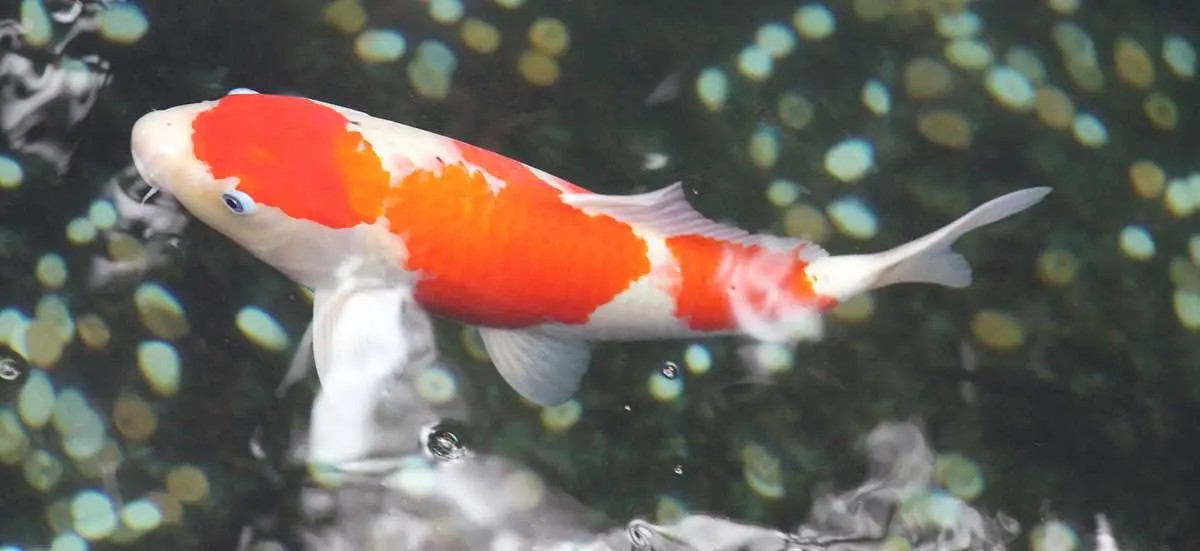
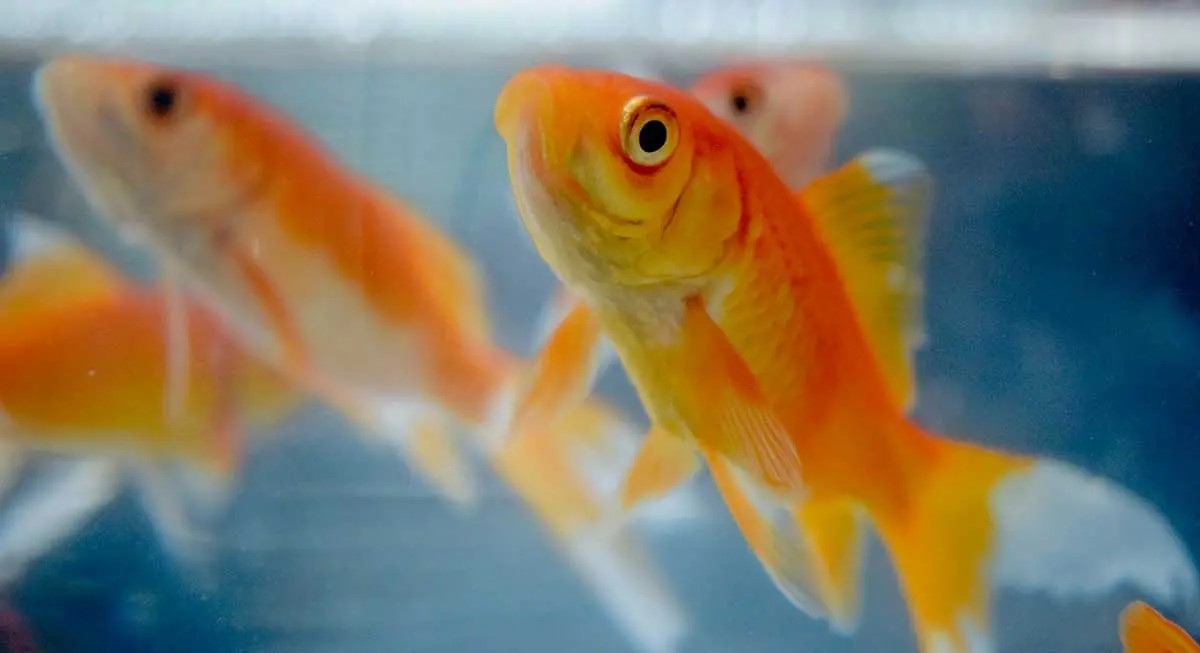
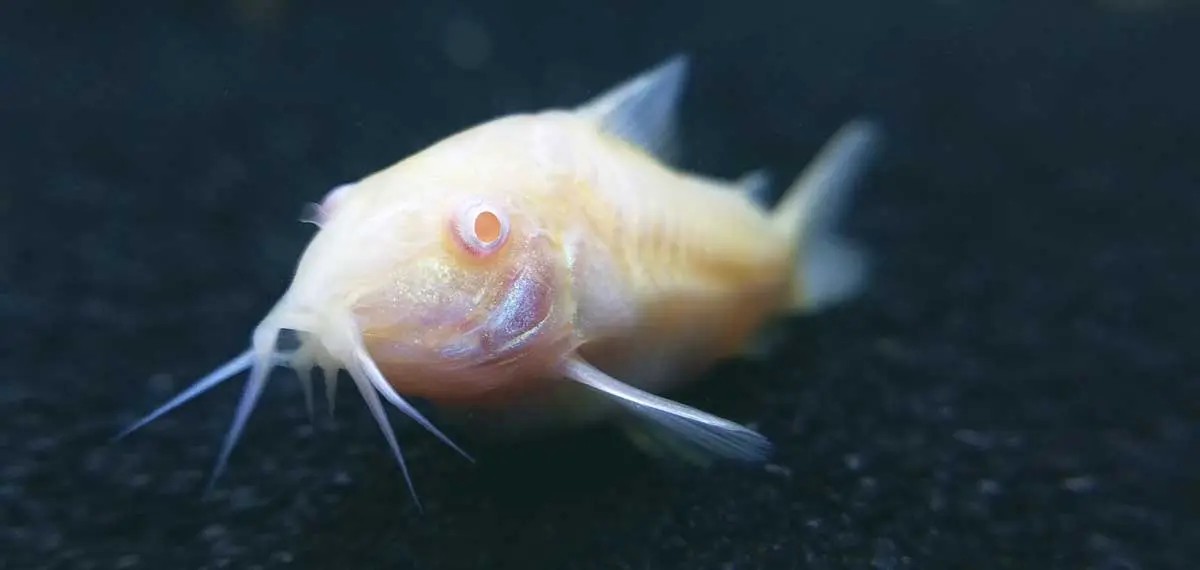
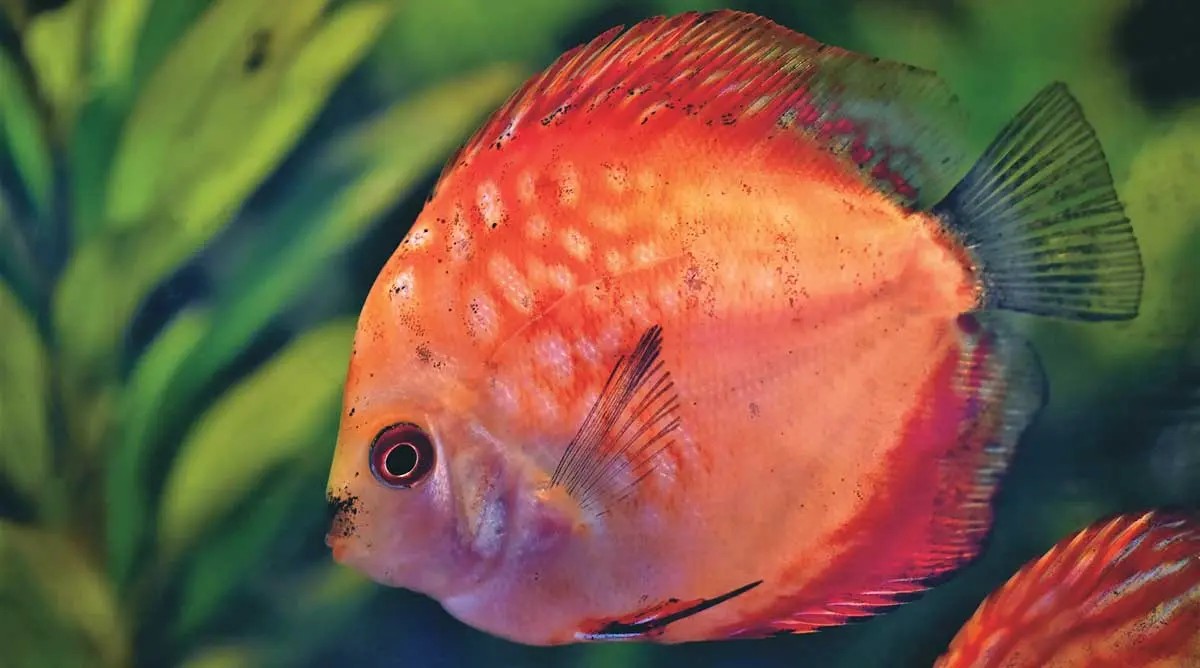


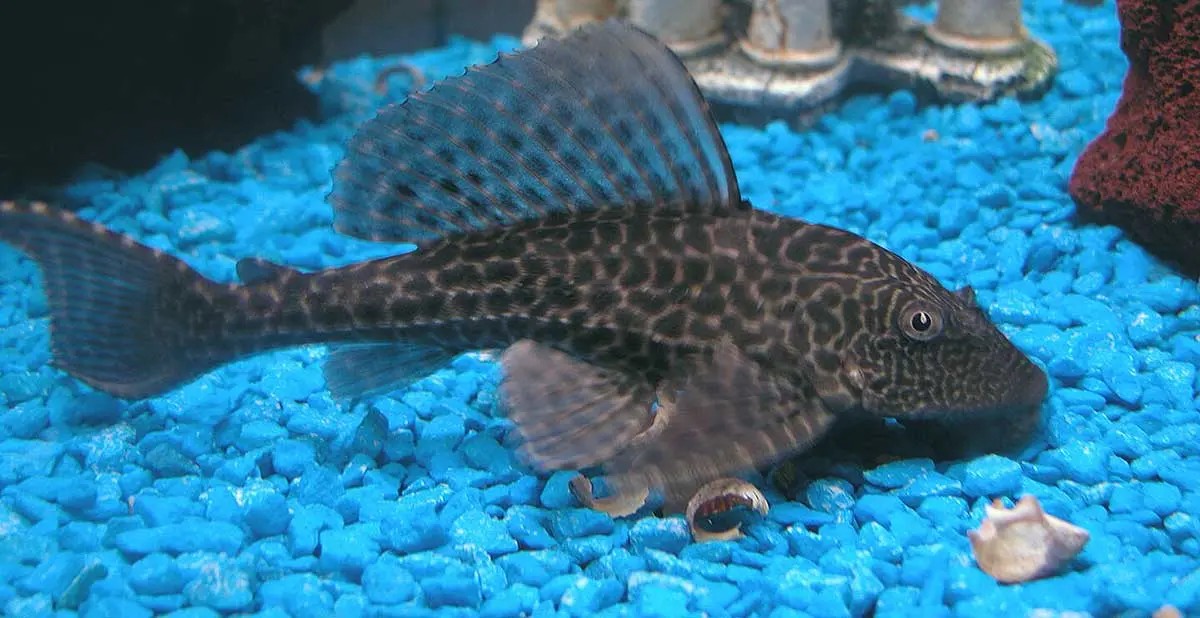

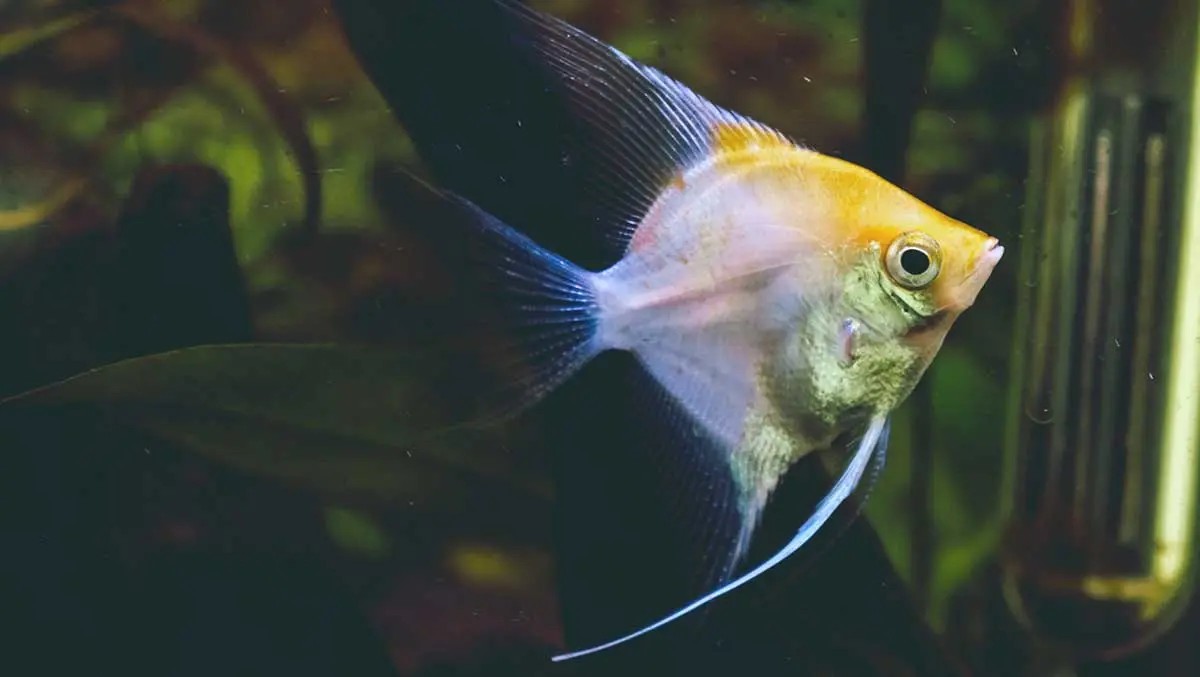
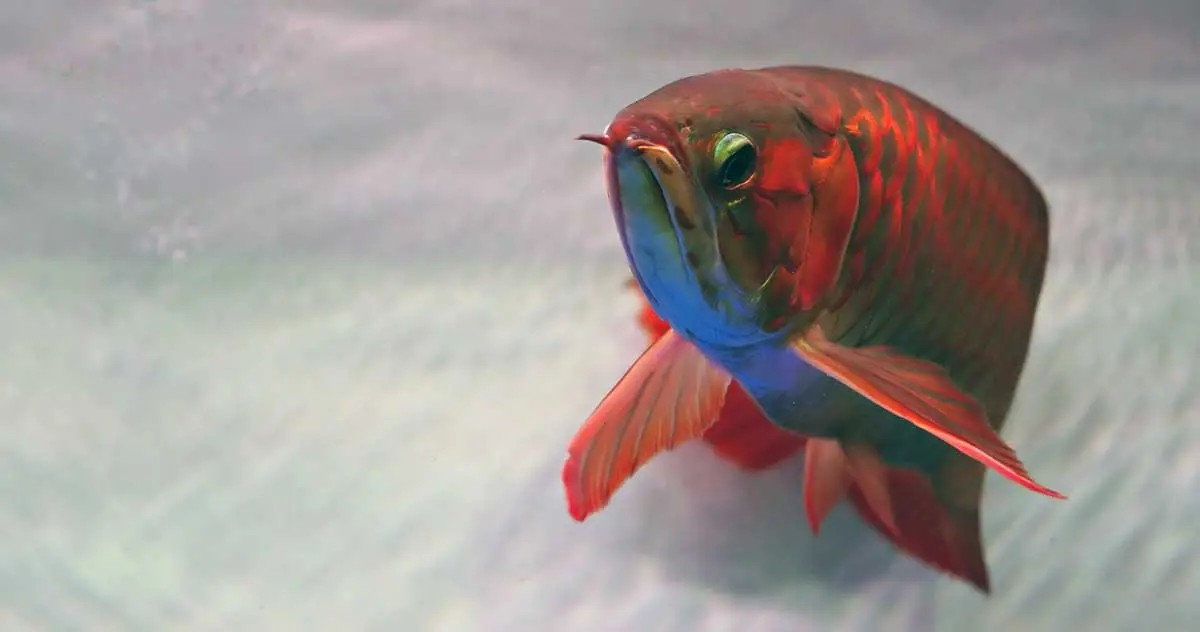
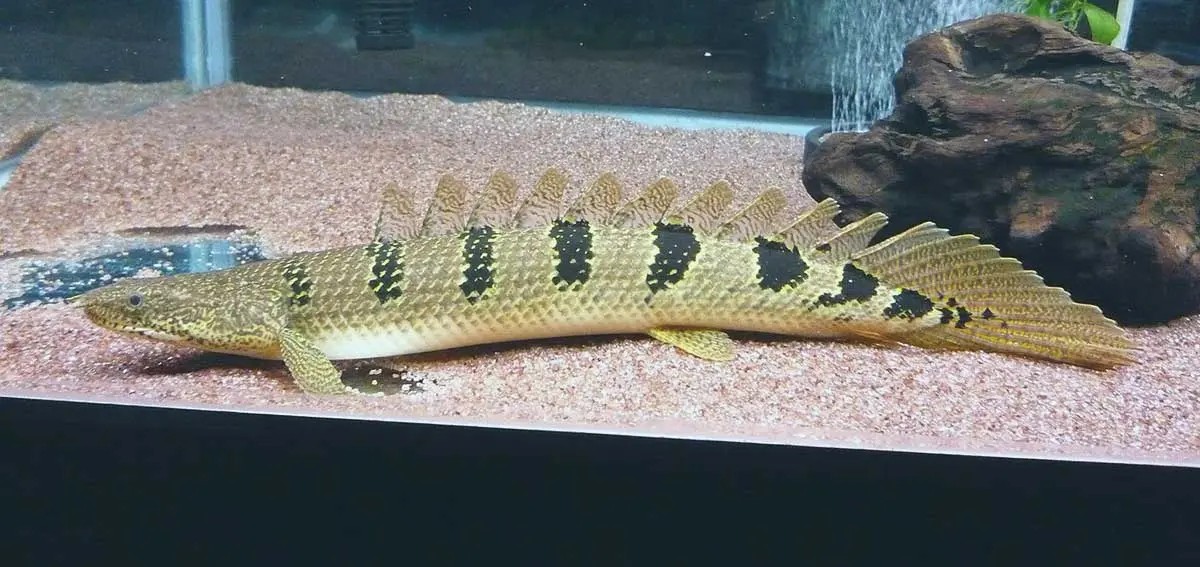
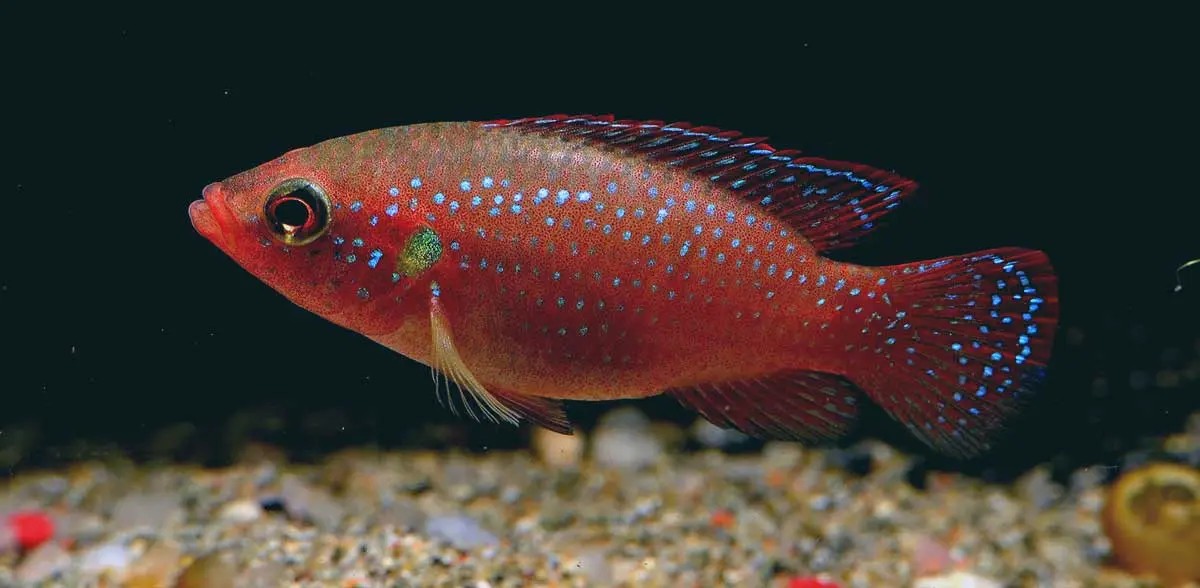

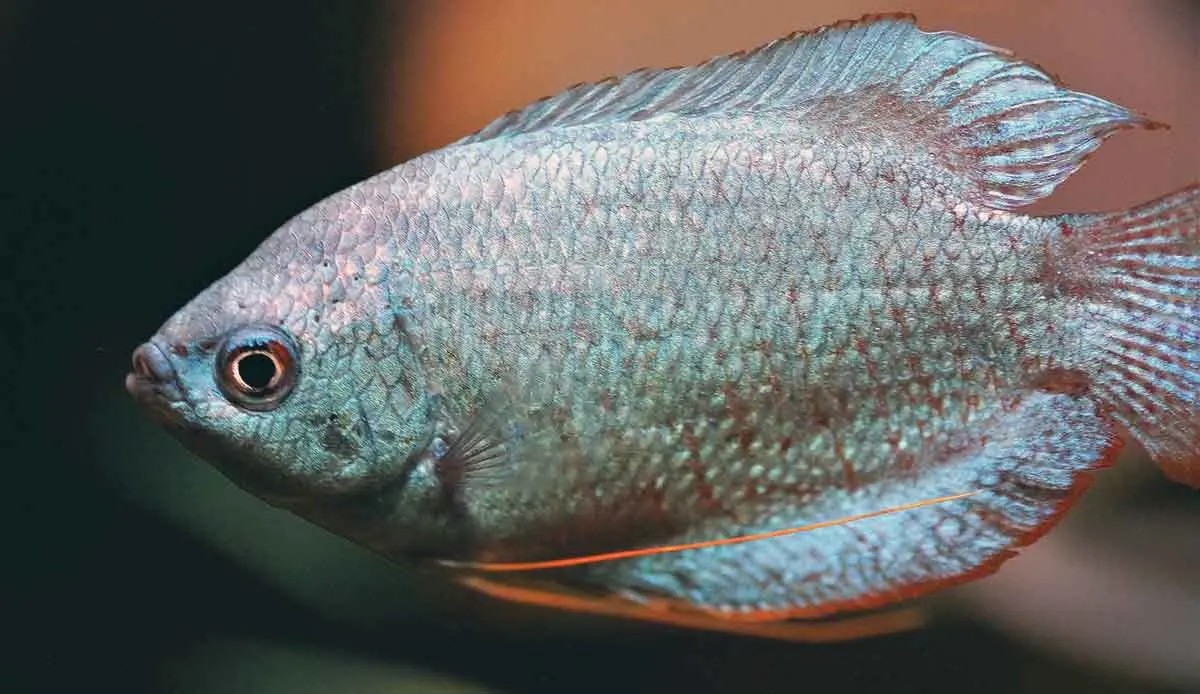
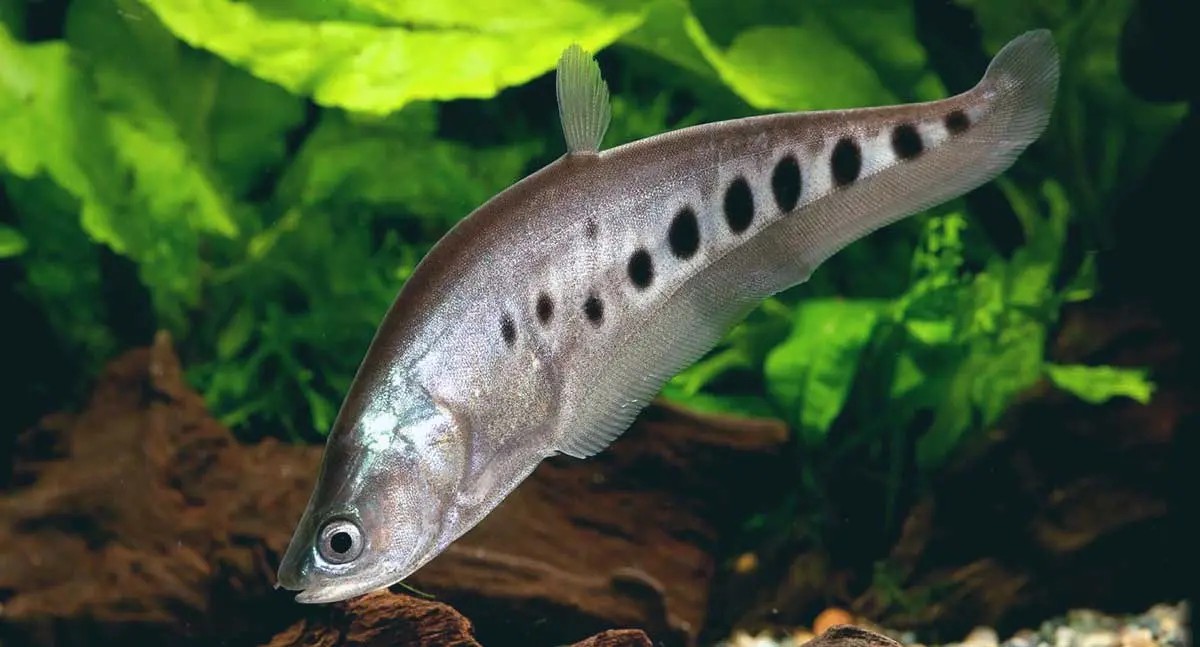

11. Frequently Asked Questions (FAQ)
11.1 What is the longest living freshwater fish for a home aquarium?
Koi can live the longest, potentially gracing your tank (or, more likely, pond) for over 25 years.
11.2 How can I ensure my fish lives a long life?
Prioritize pristine water quality, a balanced diet, appropriate tank size, and compatible tank mates.
11.3 What are the signs of a healthy fish?
Signs include vibrant color, active swimming, healthy appetite, and clear eyes.
11.4 What water parameters are most important for fish longevity?
Maintain stable and appropriate levels of ammonia, nitrite, nitrate, pH, and temperature for the specific species.
11.5 How often should I perform water changes?
Perform partial water changes (25-50%) every 1-2 weeks, depending on the tank size and fish load.
11.6 What should I feed my fish to promote longevity?
Offer a varied diet of high-quality flakes, pellets, live or frozen foods, and vegetables.
11.7 Are there any specific fish diseases that can shorten lifespan?
Yes, diseases like Ich, fin rot, and fungal infections can significantly shorten lifespan if left untreated.
11.8 How does tank size affect fish lifespan?
Inadequate tank size can lead to stress, aggression, and poor water quality, shortening lifespan.
11.9 Can stress shorten a fish’s life?
Yes, stress can weaken the immune system and make fish more susceptible to disease.
11.10 Where can I find more information about caring for specific fish species?
Visit PETS.EDU.VN for detailed care guides on a wide variety of fish species.
12. Conclusion: Creating a Legacy of Aquatic Companionship
Choosing a long-lived pet fish is a rewarding experience that allows you to form a lasting bond with your aquatic companion. By understanding the factors that influence fish lifespan and providing optimal care, you can create a thriving aquarium environment where your fish can thrive for years to come. Remember, the journey of fishkeeping is not just about providing a home, but about creating a legacy of aquatic companionship. Unlock the secrets to a thriving aquarium and a long, happy life for your finned friends at PETS.EDU.VN!
Ready to embark on this fulfilling journey? Visit PETS.EDU.VN today to discover a wealth of information on fish care, aquarium maintenance, and species selection. Our expert resources will guide you every step of the way, ensuring you create a vibrant and healthy environment for your aquatic companions.
Need personalized advice? Contact us at +1 555-987-6543 or visit our location at 789 Paw Lane, Petville, CA 91234, United States. Let pets.edu.vn be your trusted partner in creating a legacy of aquatic companionship.